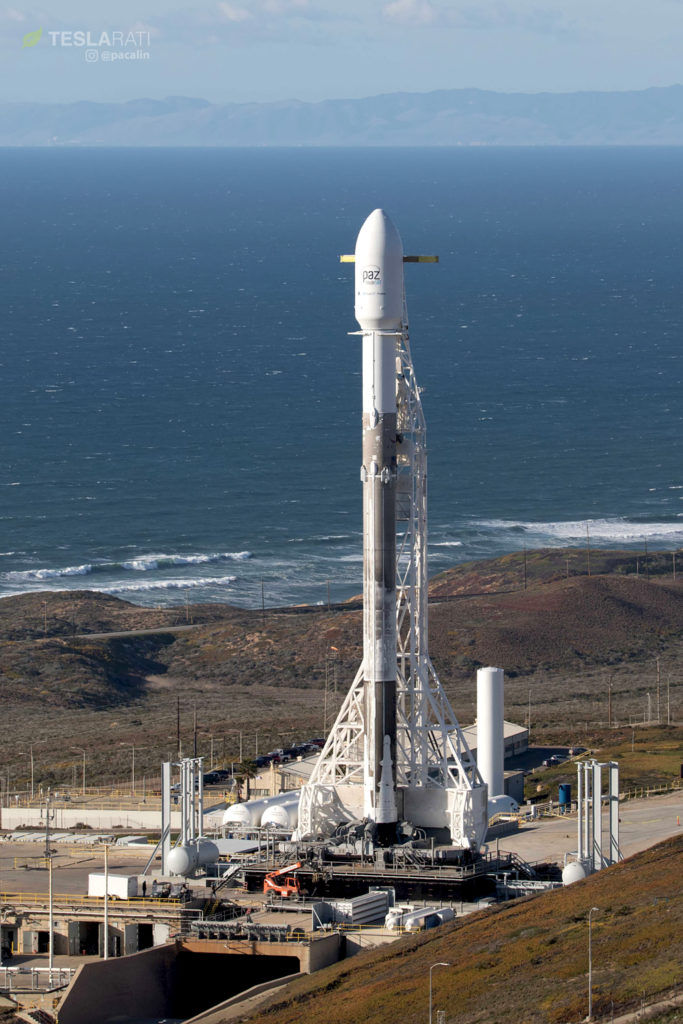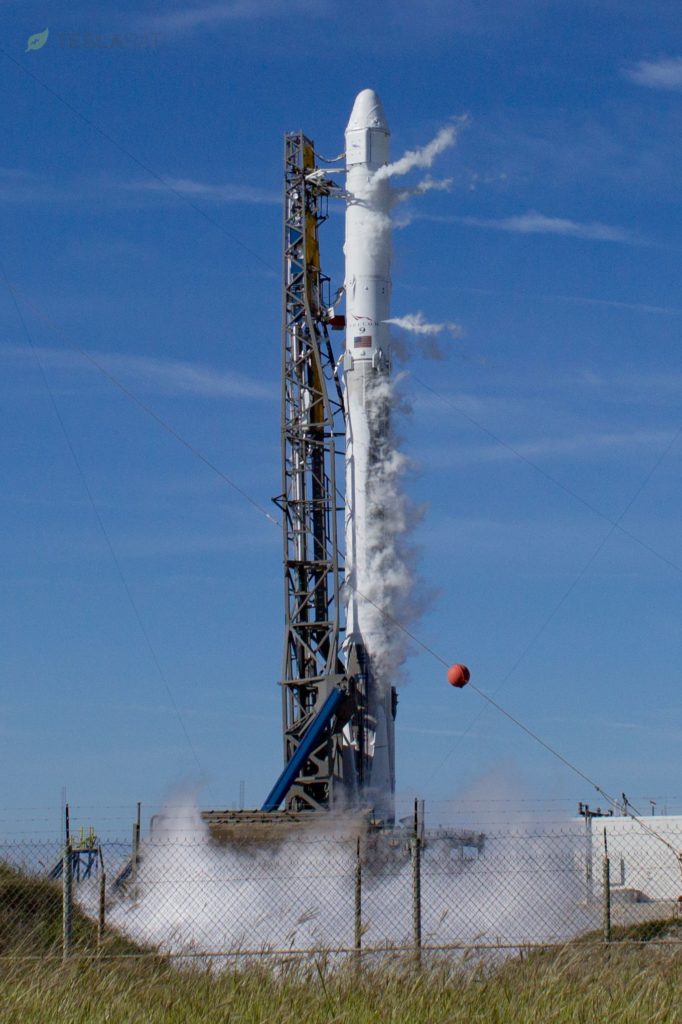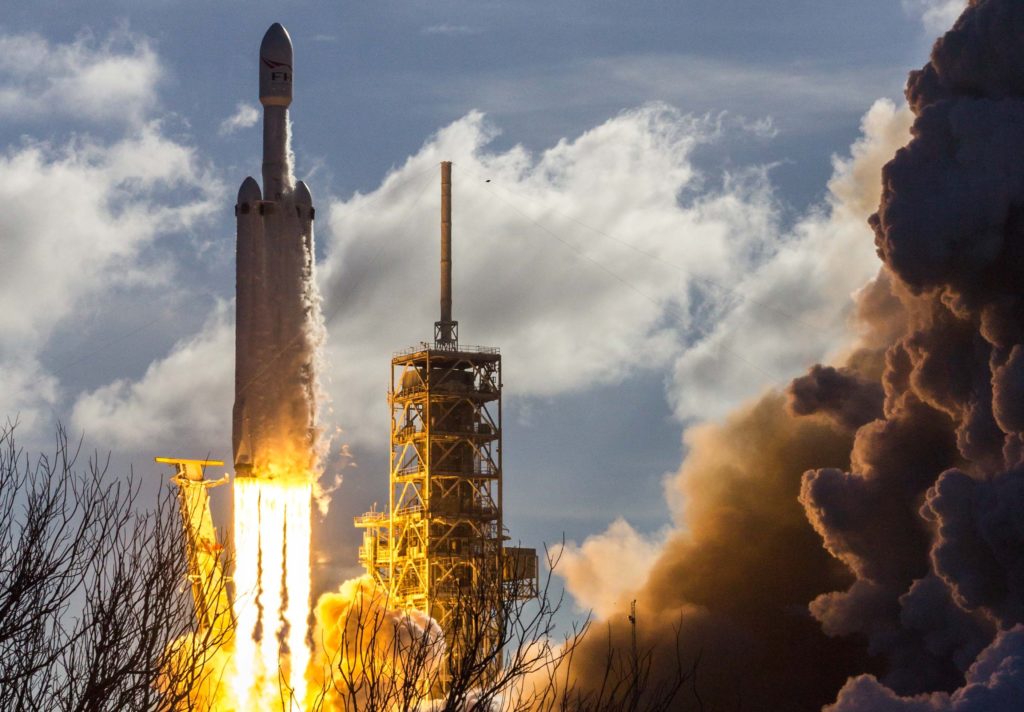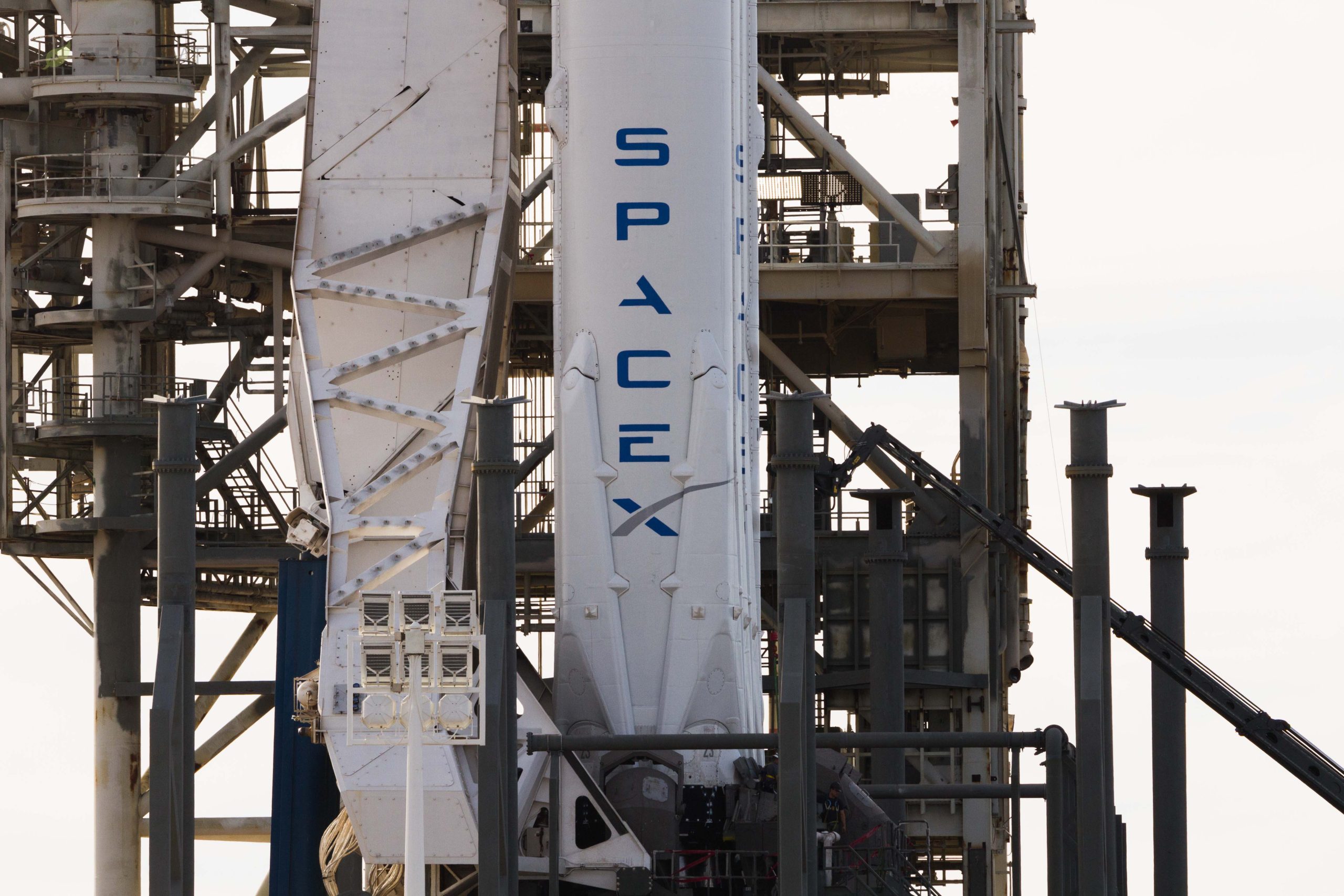
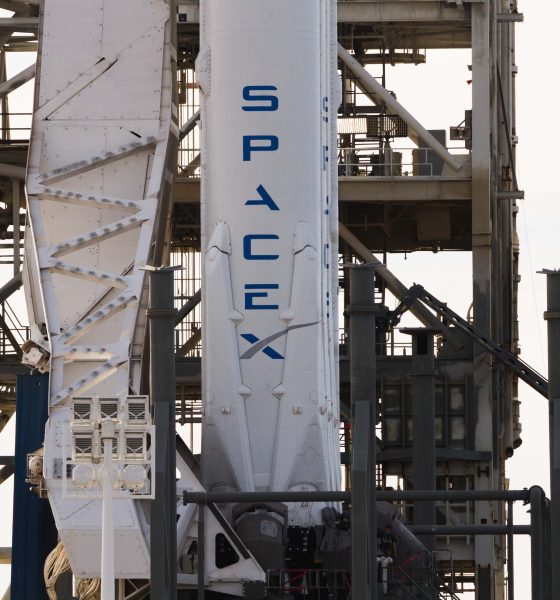
News
SpaceX to fly reused rockets on half of all 2018 launches as competition lags far behind
Speaking at SATELLITE 2018, SpaceX President Gwynne Shotwell reiterated the company’s commitment to and their customers’ acceptance of reusable rockets at the 2018, stating that SpaceX intends to fly reused boosters on at least half of their 2018 launch manifest.
Barring unforeseen circumstances, SpaceX is effectively on track to complete 30 separate missions this year with more than half flying flight-proven Falcon 9 (and Heavy) boosters. Thus far, the company has completed five launches – three flight-proven – in two months, perfectly extrapolating out to ~18 flight-proven missions and 30 total launches in 2018. While the middle weeks of March will not see any SpaceX launches, the company is on track to reach 11 flights total in late April/early March, six with reused boosters.
- SpaceX intends to launch three Falcon 9s from all three of its pads in just seven days. Pictured here their VAFB pad in California. (Pauline Acalin)
- LC-40, located in Cape Canaveral Air Force Station, is SpaceX’s second pad. (Tom Cross)
- Falcon Heavy roars off of LC-39A, SpaceX’s third operational pad. A fourth launch facility is under development in Texas. (Tom Cross)
Ignoring the tidal wave of reusable rockets
Ultimately, SpaceX’s scheduled launch cadence lends a huge amount of credence to Shotwell’s historically pragmatic claim. Assuming a successful introduction of Falcon 9 Block 5 sometime in April (currently April 5), SpaceX may even be able to get closer to flying reused boosters on two thirds of their 2018 launches, a truly jaw-dropping achievement for a year-old technology in an industry that previously saw minimal technological progress in rocketry for the better part of two decades, if not three or even four.
In almost every conceivable manner, SpaceX has taken a complacent industry by surprise, to such an extent that other major rocket builders have barely begun to develop their competitive responses to successful reuse. SpaceX’s main domestic and global competitors – ULA, Arianespace, and ILS – are at best five years away from more than dabbling in operationally reusable rocketry. ULA is in the best shape here, and their strategy of recovering just the engine segment of their future Vulcan rocket is unlikely to fly – let alone conduct the first real reuse of engines – before 2023 or 2024 at the absolute earliest, and reuse is by no means a public priority for the company.
SpaceX’s main competitors are at best five years away from more than dabbling in operationally reusable rocketry
At this point in time, Arianespace has been halfhearted for years in their attempts to seriously consider reusable rocketry. As of 2018, the closest they have gotten is a noncommittal study that would see the French and German space agencies field a Falcon 1-sized (tiny) vehicle to study the SpaceX approach to landing rockets. In the case of Arianespace, ULA, and ILS, their Ariane 6, Vulcan, and Proton Medium rockets currently under development for inaugural launches no earlier than 2020 have indeed all been explicitly designed to compete with SpaceX’s highly-competitive Falcon 9. Sounds promising, right? The reality, however, is that each distinct company has more or less designed their modernized rockets to compete with Falcon 9’s pre-reusability pricing. Even before SpaceX begins to seriously lower the cost of reused Falcon 9s at the customer level, their competitors are already incapable of beating the price of Falcon 9 and Falcon Heavy, at least without accepting net losses or leaning on government subsidies.
- Arianespace’s next-generation Ariane 6. (Arianespace)
- ULA’s upcoming Vulcan rocket. (ULA)
- ILS is developing a marginally different version of its Proton rocket, called Proton Medium. (ILS)
Arianespace’s Ariane 5 and ULA’s Atlas 5 and Delta 4 rockets do have impeccable and undeniably superior records of reliability, but SpaceX is making rapid progress towards enhanced reliability and unprecedented launch cadences. Falcon 9 Block 5 – SpaceX’s hard-won solution to rapid and cheaply reusable rocket boosters – is weeks away from its first launch, with something like six or more additional Block 5 boosters in the late stages of construction and assembly at SpaceX’s Hawthorne factory. The first prototype of BFR, a rocket designed with a fully-reusable booster and upper stage, has already begun to be assembled, with spaceship test hops scheduled to begin in 2019 and full-up orbital tests hoped to begin as early as 2020. Even with a pessimistic outlook on SpaceX’s BFR development prospects, the likelihood of orbital tests/operational launches beginning before the mid-2020s is incredibly high, barring insurmountable technological hurdles.
Whether or not SpaceX actually manages to begin its first flights to Mars in 2022 (even 2024-2026), BFR and its highly reusable orbital upper stage will swallow the launch industry whole if it manages to be even a tenth as affordable as its engineers intend it to be, and it will likely be in the late stages of hardware development and test launches before ULA, Arianespace, or ILS have even begun to operationally fly their tepid responses to reusability.

SpaceX’s BFR is being designed to launch crew, cargo, and fuel for unprecedentedly low prices. (SpaceX)
Follow us for live updates, behind-the-scenes sneak peeks, and beautiful photos from our East and West coast photographers.
Teslarati – Instagram – Twitter
Tom Cross – Twitter
Pauline Acalin – Twitter
Eric Ralph – Twitter

News
Tesla Full Self-Driving lands in a new country, its 7th
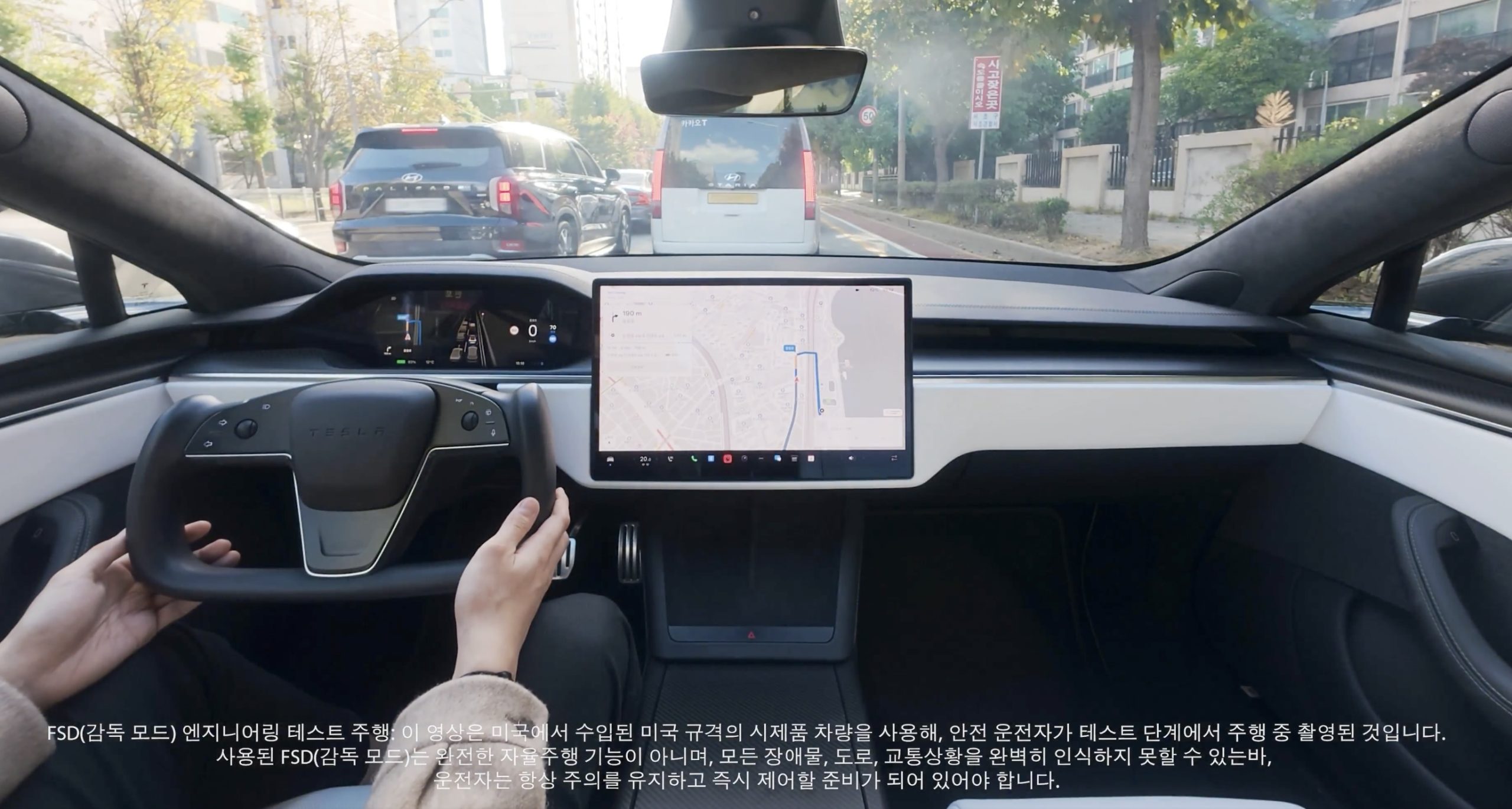
Tesla Full Self-Driving has officially landed in a new country today, its seventh overall after it launched in both Australia and New Zealand earlier this year.
On Sunday, Tesla owners in South Korea reported that the company’s Full Self-Driving (Supervised) had started arriving in their vehicles. Owners reported that it was v14.1.4, which is not the latest version available in other countries, but is one of the most recent releases Tesla has deployed to drivers:
From 6 to 7
Tesla Full Self-Driving has launched in South Korea; the 7th country to have FSD https://t.co/X6gm1SyoxV
— TESLARATI (@Teslarati) November 23, 2025
This marks the seventh country in which Tesla has enabled its Full Self-Driving suite, following the United States and Puerto Rico, Canada, China, Mexico, Australia, and New Zealand.
Tesla launched Full Self-Driving most recently in Australia and New Zealand about three months ago. The expansion is a major breakthrough for the company as it aims to launch Full Self-Driving on a global scale.
However, the company’s biggest challenge thus far has been getting European regulatory agencies to handle the red tape that has inhibited Tesla from launching its semi-autonomous driving suite on the continent. Recently, it admitted that it sees a pathway through Dutch regulatory bodies, which seem to be the most willing to work with Tesla to get FSD in Europe.
Tesla Full Self-Driving appears to be heading to Europe soon
The company said that it has driven over 1 million kilometers safely on European roads across 17 different countries in internal testing. But its path to success will be by “partnering with the Dutch approval authority RDW to gain exemption for the feature. This involves proving compliance with existing regulations (UN-R-171 DCAS) + filing an exemption (EU Article 39) for yet-to-be-regulated behaviors like Level 2 systems off-highway, system-initiated lane changes with hands-off the wheel, etc.”
Perhaps the expansion into Europe will be the biggest challenge for Tesla, but it could also yield major results and advantages for the company moving forward. Tesla said it hopes to have FSD available in Europe sometime early next year.
For now, the expansion in South Korea is the latest win for Tesla and its self-driving efforts. In the U.S., it now turns its focus toward fully autonomous operation, as it works with state agencies to launch Robotaxi outside of Texas, California, and most recently, Arizona.
Elon Musk
Tesla CEO Elon Musk teases insane capabilities of next major FSD update

Tesla CEO Elon Musk teased the insane capabilities of the next major Full Self-Driving update just hours after the company rolled out version 14.2 to owners.
Tesla Full Self-Driving v14.2 had some major improvements from the previous iteration of v14.1.x. We were on v14.1.7, the most advanced configuration of the v14.1 family, before Tesla transitioned us and others to v14.2.
However, Musk has said that the improvements coming in the next major update, which will be v14.3, will be where “the last big piece of the puzzle finally lands.”
14.3 is where the last big piece of the puzzle finally lands
— Elon Musk (@elonmusk) November 21, 2025
There were some major improvements with v14.2, most notably, Tesla seemed to narrow in on the triggers that caused issues with hesitation and brake stabbing in v14.1.x.
One of the most discussed issues with the past rollout was that of brake stabbing, where the vehicle would contemplate proceeding with a route as traffic was coming from other directions.
We experienced it most frequently at intersections, especially four-way stop signs.
Elon Musk hints at when Tesla can fix this FSD complaint with v14
In our review of it yesterday, it was evident that this issue had been resolved, at least to the extent that we had no issues with it in a 62-minute drive, which you can watch here.
Some owners also reported a more relaxed driver monitoring system, which is something Tesla said it was working on as it hopes to allow drivers to text during operation in the coming months. We did not test this, as laws in Pennsylvania prohibit the use of phones at any time due to the new Paul Miller’s Law, which took effect earlier this year.
However, the improvements indicate that Tesla is certainly headed toward a much more sentient FSD experience, so much so that Musk’s language seems to be more indicative of a more relaxed experience in terms of overall supervision from the driver, especially with v14.3.
Musk did not release or discuss a definitive timeline for the release of v14.3, especially as v14.2 just rolled out to Early Access Program (EAP) members yesterday. However, v14.1 rolled out to Tesla owners just a few weeks ago in late 2025. There is the potential that v14.3 could be part of the coming Holiday Update, or potentially in a release of its own before the New Year.
News
Tesla Full Self-Driving v14.2 – Full Review, the Good and the Bad

Tesla rolled out Full Self-Driving version 14.2 yesterday to members of the Early Access Program (EAP). Expectations were high, and Tesla surely delivered.
With the rollout of Tesla FSD v14.2, there were major benchmarks for improvement from the v14.1 suite, which spanned across seven improvements. Our final experience with v14.1 was with v14.1.7, and to be honest, things were good, but it felt like there were a handful of regressions from previous iterations.
While there were improvements in brake stabbing and hesitation, we did experience a few small interventions related to navigation and just overall performance. It was nothing major; there were no critical takeovers that required any major publicity, as they were more or less subjective things that I was not particularly comfortable with. Other drivers might have been more relaxed.
With v14.2 hitting our cars yesterday, there were a handful of things we truly noticed in terms of improvement, most notably the lack of brake stabbing and hesitation, a major complaint with v14.1.x.
However, in a 62-minute drive that was fully recorded, there were a lot of positives, and only one true complaint, which was something we haven’t had issues with in the past.
The Good
Lack of Brake Stabbing and Hesitation
Perhaps the most notable and publicized issue with v14.1.x was the presence of brake stabbing and hesitation. Arriving at intersections was particularly nerve-racking on the previous version simply because of this. At four-way stops, the car would not be assertive enough to take its turn, especially when other vehicles at the same intersection would inch forward or start to move.
This was a major problem.
However, there were no instances of this yesterday on our lengthy drive. It was much more assertive when arriving at these types of scenarios, but was also more patient when FSD knew it was not the car’s turn to proceed.
Can report on v14.2 today there were ZERO instances of break stabbing or hesitation at intersections today
It was a significant improvement from v14.1.x
— TESLARATI (@Teslarati) November 21, 2025
This improvement was the most noticeable throughout the drive, along with fixes in overall smoothness.
Speed Profiles Seem to Be More Reasonable
There were a handful of FSD v14 users who felt as if the loss of a Max Speed setting was a negative. However, these complaints will, in our opinion, begin to subside, especially as things have seemed to be refined quite nicely with v14.2.
Freeway driving is where this is especially noticeable. If it’s traveling too slow, just switch to a faster profile. If it’s too fast, switch to a slower profile. However, the speeds seem to be much more defined with each Speed Profile, which is something that I really find to be a huge advantage. Previously, you could tell the difference in speeds, but not in driving styles. At times, Standard felt a lot like Hurry. Now, you can clearly tell the difference between the two.
It seems as if Tesla made a goal that drivers should be able to tell which Speed Profile is active if it was not shown on the screen. With v14.1.x, this was not necessarily something that could be done. With v14.2, if someone tested me on which Speed Profile was being used, I’m fairly certain I could pick each one.
Better Overall Operation
I felt, at times, especially with v14.1.7, there were some jerky movements. Nothing that was super alarming, but there were times when things just felt a little more finicky than others.
v14.2 feels much smoother overall, with really great decision-making, lane changes that feel second nature, and a great speed of travel. It was a very comfortable ride.
The Bad
Parking
It feels as if there was a slight regression in parking quality, as both times v14.2 pulled into parking spots, I would have felt compelled to adjust manually if I were staying at my destinations. For the sake of testing, at my first destination, I arrived, allowed the car to park, and then left. At the tail-end of testing, I walked inside the store that FSD v14.2 drove me to, so I had to adjust the parking manually.
This was pretty disappointing. Apart from parking at Superchargers, which is always flawless, parking performance is something that needs some attention. The release notes for v14.2. state that parking spot selection and parking quality will improve with future versions.
Any issues with parking on your end? 14.1.7 didn’t have this trouble with parking pic.twitter.com/JPLRO2obUj
— TESLARATI (@Teslarati) November 21, 2025
However, this was truly my only complaint about v14.2.
You can check out our full 62-minute ride-along below:
